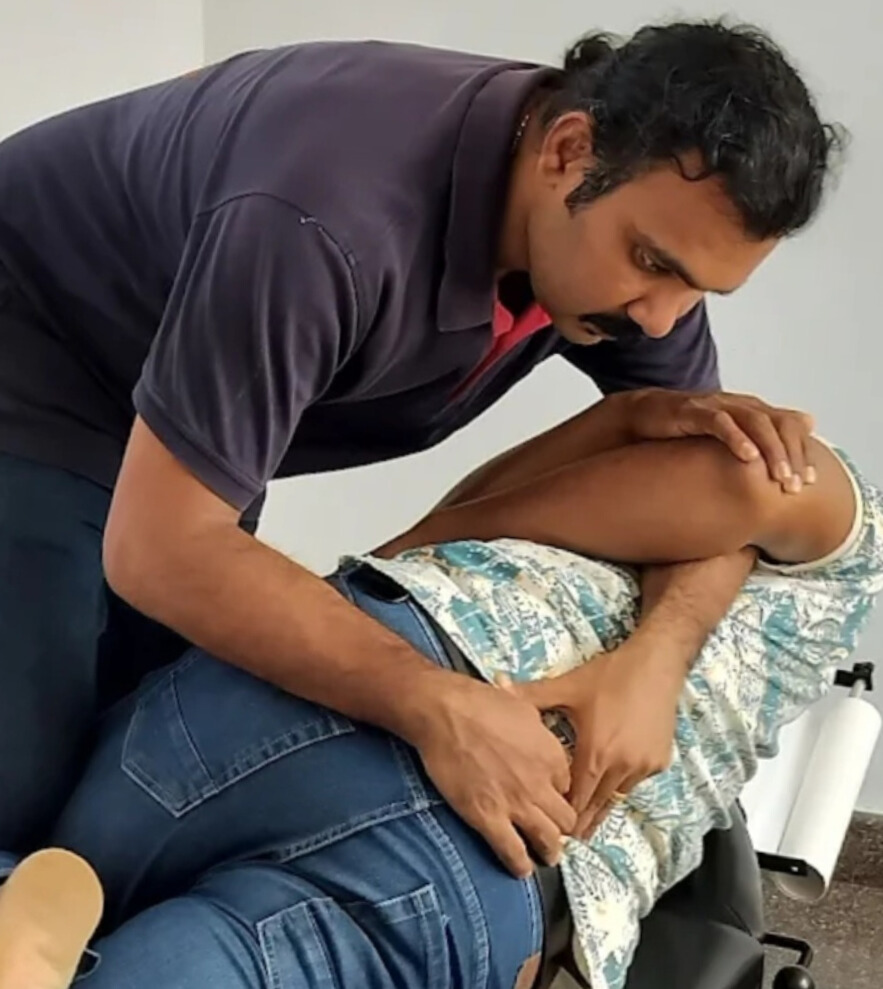90% of ‘Sciatica’ Is Misdiagnosed – It's Piriformis Syndrome or Marma Blockage Why your MRI may be lying to you—and your pain isn't in your spine, it's in your muscles and nadis.
- Dr Rakesh VG
- Jul 6
- 3 min read
Updated: Jul 8
By Dr Rakesh Ayureshmi, Ayureshmi Ayurveda Wellness Centre, Kollam, Kerala, India
You’re told it’s “sciatica.” You get an MRI. The report mentions a disc bulge. The doctor nods. Painkillers, physio, maybe surgery.
But what if the real cause of your pain isn’t in your spine at all?
Over 90% of so-called sciatica cases are actually due to piriformis syndrome or marma (energy point) blockages.
Modern imaging often overlooks these causes—and patients suffer needlessly for years.
Not All Radiating Leg Pain Is Sciatica
The term “sciatica” is often misused. True sciatica is caused by compression of the sciatic nerve roots in the lumbar spine, typically by a herniated disc. But here’s the twist:
A study in the Journal of Neurosurgery: Spine (2013) found no direct correlation between MRI findings and symptoms in nearly 60% of back pain patients.
That means your MRI may show a disc bulge that has nothing to do with your pain.
Instead, the real villain may be the piriformis muscle, a small, pear-shaped muscle deep in the buttock. When this tightens, it can compress the sciatic nerve and mimic spinal sciatica—without any disc involvement.
In Ayurveda, this is more than a muscular issue. It’s a marma dysfunction—a blockade of energy (prana) flow at key points that govern the lower back and leg pathways.
Piriformis Syndrome: The Silent Impostor
Piriformis syndrome is often missed because:
It doesn’t show up on standard MRIs or CT scans
It produces identical symptoms: radiating leg pain, numbness, and tingling
Sitting, climbing stairs, or sleeping on one side worsens it
Dr. Loren Fishman, Columbia University physiatrist, estimates that piriformis syndrome may account for up to 70% of non-disc sciatica cases, but it’s frequently undiagnosed.
Common triggers? Prolonged sitting, poor posture, pelvic misalignment, or trauma.
Now add the Ayurvedic lens: these factors disturb vata dosha, particularly apana vata, which governs the lower body.
This vitiation causes sankocha (constriction) and sanga (obstruction) at critical marmas like katikataruna and jangha marma—leading to pain and dysfunction.
Ayurveda and Marma Chikitsa: Seeing Beyond the MRI
Ayurveda doesn’t need an MRI to locate dysfunction. It uses palpation, observation, and pulse diagnosis to identify marma blockages and muscle-nerve disharmony.
When sciatic-like pain is reported, an Ayurvedic physician investigates:
Kati marma (lower back)
Kukundara marma (buttocks/sacrum area)
Janu and indrabasti marma (thigh and knee)
If these points are tender, tight, or pulsing abnormally, it’s often a sign of localized pranic obstruction, not disc herniation.
Through techniques like marma therapy, abhyanga with vata-pacifying oils, basti (medicated enema), and chiropractic spinal alignment, the blockages can be cleared—often with immediate relief.
Chiropractic + Marma = Complete Relief
Chiropractic care offers excellent spinal alignment techniques, but may miss soft tissue and energetic imbalances.
But with marma therapy we can relieve energy blockages and soft tissue involvements.
Together, they work synergistically:
Chiropractic mobilizes joints and decompresses the spine
Marma releases muscular tension and reboots pranic flow
Stretching the piriformis and correcting posture ensures long-term relief
A 2017 review in the Journal of Bodywork and Movement Therapies found that manual therapy combined with muscle release techniques yielded better results in piriformis syndrome than standard physiotherapy.
This integrative model is especially potent in chronic cases where conventional medicine has failed.
The Real Danger: Chasing MRI Shadows
Too many patients waste years—and lakhs—chasing MRI reports, steroid shots, and failed surgeries.
They ignore the body’s clear signals: tightness in the buttock, stiffness after sitting, one-sided pain that worsens with hip movement.
Worse, they continue to sit—literally and figuratively—on the source of their suffering: a knotted piriformis and jammed marma.
You don’t need another scan. You need someone to put hands, heart, and healing where the pain lives.
Conclusion: Reclaim Your Diagnosis, Reclaim Your Body
If you’ve been labeled with “sciatica,” but your pain doesn’t match your MRI—look deeper.
Ask: Is it muscular? Is it energetic? Is it my lifestyle?
Because in most cases, your spine isn’t broken. Your flow is blocked.
Real healing begins when you stop chasing shadows and start listening to your body.
"90% of ‘sciatica’ cases are NOT true sciatica. It’s piriformis syndrome or marma blockage—but your MRI can’t see that. Stop chasing reports. Start releasing energy.










Comments